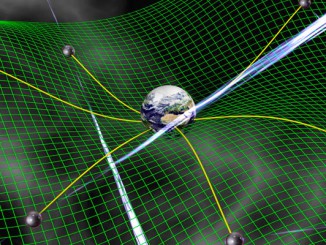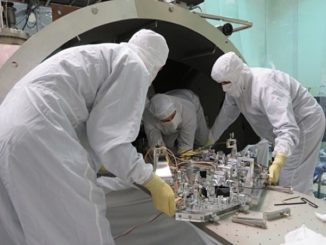
A device built to improve the sensitivity of gravity wave detectors has been used to measure the unimaginably tiny pressure exerted by quantum fluctuations in laser light on a human-scale object.
The “quantum squeezer” instrument, which helps reduce quantum background “noise” in the Laser Interferometer Gravitational-wave Observatory, or LIGO, detectors showed the pressure of virtual particles popping into and out of existence is able to move 40-kilogram (88-pound) mirrors by 10-20 metres. The result was predicted by quantum theory but never before measured.
“A hydrogen atom is 10-10metres (across), so this displacement of the mirrors is to a hydrogen atom what a hydrogen atom is to us. And we measured that,” said Lee McCuller, a researcher at MIT’s Kavli Institute for Astrophysics and Space Research.
Nergis Mavalvala, the Marble Professor and associate head of the physics department at MIT, said humans, too, “every nanosecond of our existence, are being kicked around, buffeted by these quantum fluctuations.”
“It’s just that the jitter of our existence, our thermal energy, is too large for these quantum vacuum fluctuations to affect our motion measurably,” she said. “With LIGO’s mirrors, we’ve done all this work to isolate them from thermally driven motion and other forces, so that they are now still enough to be kicked around by quantum fluctuations and this spooky popcorn of the universe.”
LIGO consists of two sprawling detectors, one in the state of Washington and the other in Louisiana. Both feature 4-kilometre-long (2.5-mile) tunnels at right angles to each other, both featuring 40-kilogram mirrors at the far ends.
By timing differences in the transit times of laser beams bouncing back and forth in both arms, researchers can detect the passage of gravity waves that distort the space the beams are moving through, ever so slightly lengthening or shortening the distance from one end to the other.
To measure the effects of quantum fluctuations on the mirrors, the researchers first measured the total noise in the system, determining how much was due to “classical” effects like normal, everyday vibrations, as well as the effects of quantum noise. Using the quantum squeezer, the laser beams were coaxed into specific states that allowed the team to subtract the classical noise, isolating the purely quantum effects.
“This quantum fluctuation in the laser light can cause a radiation pressure that can actually kick an object,” McCuller said. “The object in our case is a 40-kilogram mirror, which is a billion times heavier than the nanoscale objects that other groups have measured this quantum effect in.”
The research was published 1 July in the journal Nature.



